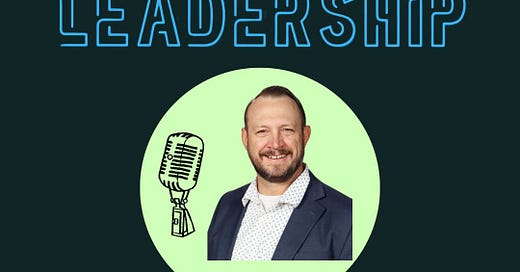Leading Through Loss: Confronting Tragedy and Mental Health in Our Schools
Educational Leadership with Principal JL Podcast
In the quiet moments of reflection that follow a school tragedy. Educational leaders face the most challenging and human aspects of our roles. As a high school principal who has navigated the devastating impact of four student deaths in just three years. I’ve been forced to confront a truth no leadership training or principal preparation program can fully prepare you for: schools are not immune to tragedy. These experiences have reshaped my understanding of crisis management and deepened my resolve to prioritize mental health across every level of our school community.
Behind the Numbers, Real Lives
The statistics are staggering. According to the Centers for Disease Control and Prevention (CDC), suicide is now the second leading cause of death among individuals ages 10 to 24. In 2021 alone, over 6,600 young people in this age group died by suicide in the United States. These aren’t just numbers, they are students we knew, cheered for, taught, and watched grow. They are futures that will never be realized. The most heartbreaking aspect is knowing these were often permanent decisions made in response to temporary pain.
Developmentally, this disconnect makes sense. The prefrontal cortex, our brain’s center for long-term planning, impulse control, and rational thinking, doesn’t fully mature until around age 25. Teenagers are biologically predisposed to focus on the immediacy of emotion and experience. They often struggle to envision a future beyond the crisis they face in the moment.
Crisis Response: Structured, Swift, and Compassionate
When tragedy strikes, the emotional toll is immeasurable, but the logistical response must be immediate and measured. In our district, we’ve built a multi-layered crisis response protocol rooted in compassion, communication, and coordination.
The process begins with notification to our superintendent, who then activates a trained crisis team. This team typically includes the building principal, counselors from across the district, licensed mental health professionals, community partners, and support from our regional education service unit. Our initial steps are focused and deliberate: verify facts, identify those most directly affected, and deploy targeted emotional support to the individuals who need it most: friends, siblings, teachers, and classmates.
Communication is one of the most delicate aspects of crisis leadership. In those critical first hours and days, we must balance transparency with sensitivity, urgency with care. We craft messages for staff, students, and families that acknowledge the loss while also providing clear guidance for what comes next? To prevent unnecessary trauma triggers, we discreetly remove the student’s name from school systems and records. It’s not heartless, it’s humane.
The day following a tragedy our schools transform into sanctuaries of support. We bolster counseling resources, designate safe spaces for grieving students, and provide substitute coverage so teachers can step away when needed. Counselors trace the student’s schedule, checking in with teachers and classmates, ensuring no one is left alone in their grief.
Supporting the Supporters
Through each of these heartbreaking experiences, one lesson has stood out clearly: our faculty needs care too. Teachers grieve. They feel the weight of loss deeply especially those who had close connections with the student. And yet, they show up for their students often without processing their own emotions.
As a principal, I’ve made it a point to personally connect with each staff member during crisis response days. It’s essential that they know it’s okay to step back, to grieve, and to feel. We provide them with coverage and with choice take a moment, or a few hours, whatever is needed to begin healing. True leadership in these moments means putting people before plans.
A Mental Health Crisis in Our Schools
Beyond the acute response to tragedy, we’re facing a broader, chronic crisis, one of student mental health. According to the National Center for Education Statistics, 70% of public schools reported an increase in students seeking mental health services in 2021. Even more, 76%, reported increased concern from staff regarding student depression, anxiety, and trauma.
We’ve responded with professional development for teachers, training them to recognize signs of emotional distress. We’ve added counselors and partnered with local mental health organizations. And yet, I’m left asking: is it enough?
Empowering Students as First Responders
Here’s the truth: students often see and hear things we never will. They catch the late-night texts, the concerning social media posts, the subtle changes in a friend’s behavior. What if we equipped students with the same training we give adults? What if we empowered them to recognize warning signs and speak up, not with fear, but with purpose?
Imagine the impact of a peer who knows how to ask the right question or get help in time. By embedding mental health literacy into our student leadership programs, advisory periods, or wellness curricula, we can turn bystanders into lifesavers. This isn’t about turning teens into therapists. It’s about turning communities into safety nets.
The Courage to Lead With Compassion
There’s no guidebook for leading through tragedy. There’s no perfect script to follow. What we do have is each other and the choice to lead with empathy, presence, and a willingness to sit in the discomfort of grief.
Leadership during crisis is not about having all the answers. It’s about having the courage to ask the right questions. How do we better support our staff? How do we reach students before they reach the edge? How do we build schools where mental health is not an afterthought, but a foundation?
As school leaders, our influence is powerful. In moments of crisis, our words matter. Our actions matter even more. Let us commit to leading with humanity. Let us not shy away from these hard conversations. And most of all, let us ensure that our schools are places where every student and every adult knows that they are seen, supported, and never alone.




